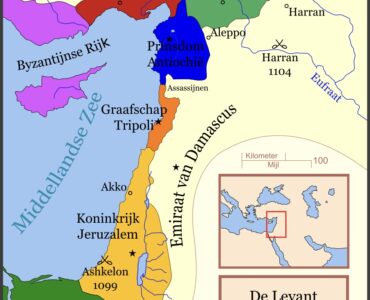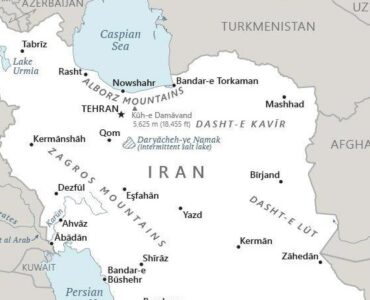
Ottoman Culture And The Concept Of Empire
Rulers And Subjects
The authority of the Ottoman sultans was derived from several layers of Middle Eastern cultural tradition. The Ottomans primarily derived their legitimacy from Turko-Mongol concepts of royal family supremacy, warrior sovereignty, and what they considered to be a divinely given mission to conquer the world. This patrimonial conception, which based the right to rule on aristocratic noble lineage combined with victories in battle, had its origin in the Ottoman Turkish and Central Asian past. In the early centuries of Ottoman rule, this conception was dramatized by the open struggle for power among the sons of a deceased ruler. The winner of that struggle was considered to have been selected by God for his reign. Furthermore, the whole of the conquered domain was considered in patrimonial terms to be the personal property of the sultan. The state was his household; the soldiers, courtiers, and administrators were his slaves, personally devoted to him; the subjects were his flocks. The territory of the empire was his to distribute among his family and retainers.
From the Islamic tradition came the claim to be the protector and defender of Islam and therefore successor to the caliphate. Suleyman I (r. 1520–66) took the title Halife-i Ru-i Zemin (caliph of the world). The sultan was viewed in Islamic terms as the defender of Islam, the protector of Muslim peoples; a ghazi, a warrior who waged jihad to expand the domains of Islam. The sultan thus protected Muslims against Christian enemies without and maintained their supremacy over Christians within the empire. The Ottomans were the defenders of the two holy sanctuaries of Mecca and Medina. Muslims outside Ottoman domains appealed to them for help against infidel enemies. From Spain, from Acheh, on the island of Sumatra, and from Central Asia came appeals for aid against non-Muslim enemies. As the greatest conquering state in Islamic history, the Ottoman empire acquired an absolute legitimacy in Muslim terms.
Moreover, the Ottoman sultans were considered to be tantamount to caliphs, because they were the executors of Islamic law. The rulers provided justice and protection for the common people against the depredations of government officials. They patronized, sponsored, and organized Muslim judicial and educational affairs. Their duty to implement the Shari’a gave them the right to issue supplementary regulations (firmans) that were later gathered into legal codes (kanuns). The sultans issued decrees defining the status, duties, and dress codes for all of their functionaries; laws to implement the landholding and tax systems, economic regulations, military and administrative matters, criminal justice, the discipline of officials, and the organization of religious affairs. The sultans’ activities as lawgivers supplementing the Shari’a derived from both Muslim and Byzantine traditions. This function was itself a source of legitimacy. It was an historical part of the emperor’s prerogative.
Ottoman authority was further based on a cosmopolitan culture, comprising Arab, Persian, Turkish, Byzantine, and European elements. From Middle Eastern monarchical concepts came the conception of universal glory. From eastern Roman tradition came the notion of the Ottoman ruler as emperor and heir to the Roman empire, causing Ottoman rulers to take the title Padishah (supreme shah). Sultan Mehmed II generously patronized Persian poetry and European painting. Arab and Persian writers, Italian artists, and Greek and Serbian poets were part of his entourage. Many of the sponsored arts had themes that embellished royal claims. For example, illustrated manuscripts produced in the sultans’ own workshops, like those of the Safavids and other rulers, depicted the greatness of the monarchy. Histories of the conquests of Alexander the Great and of past Persian emperors, mystical poetry, love stories, fables, and other works long part of the repertoire of royal patronage were produced to demonstrate the sophistication, cultivation, and grandeur of the Ottomans. In the sixteenth century, Ottoman workshops turned from classic works to the illustration of contemporary history with depictions of court ceremonies, receptions of ambassadors, conquests of famous fortresses, festivals, and processions. In these manuscripts the sultans appear in realistic fashion, directing their armies, presiding over the court, surrounded by their janissaries, viziers, scholars, holy men, merchants, craftspeople, and their subjects. These illustrated histories are a particular Ottoman contribution to the many varieties of Muslim world artistic culture, self-consciously celebrating the Ottoman sultans and the Ottoman elite as rulers of the world.
The patronage of philosophy, science, and other universal subjects was also a way of asserting the Ottoman claim to universal authority. Ottoman architecture, while devoted to mosques and colleges, nonetheless borrowed the stylistic motifs of Aya Sofia and Greek ecclesiastical structures to symbolize the Ottoman triumph over and the appropriation of the genius of Christianity and the Byzantine empire. The Ottoman palace itself was organized in a way that symbolized the cosmic nature of the ruler’s power. Both public ceremonies in which the sultan spoke and his known private pleasures (hunting, drinking, and dancing girls) were crafted to symbolize that he stood above ordinary mortals. In the seventeenth century the increasing importance of pleasure in the daily life of sultans probably reflected the rising power of an institutionalized bureaucracy that intensified the symbolic roles of the sultanate.
The Ottomans also sought to present their claims in symbols derived from Europe. Mehmed II had invited important Italian artists to Istanbul, and in the 1530s Suleyman the Magnificent renewed this orientation. In 1532 he acquired an extraordinary Venetian-made gold and jeweled helmet or crown. Built with four crowns superimposed, it rivaled the papal tiara. Other regalia, such as scepters, orbs, and ceremonial canopies intended to rival those of Western enemies, were also acquired in this period (1532-36), even though the possession of such emblems was until this point outside the Ottoman tradition. This Western orientation symbolized the ambition to be recognized as a dominant figure among European rulers and was connected to Ottoman claims to be heirs to the Roman Empire, the rulers of Italy and indeed the whole of the Mediterranean basin.
Ottoman power was further legitimized by ceremonial demonstrations. Istanbul, the capital, was used as the stage for demonstrations of Ottoman authority. Imperial constructions and public works undertakings, parades of guilds and the military and of foreign ambassadors and their gifts, celebrations of campaign victories and feasts celebrating life events for the ruling family were all demonstrations of Ottoman authority. Public festivals, especially at an Ottoman prince’s circumcision, a princess’s marriage, or a sultan’s ascension, were a form of theater that renewed the population’s attachment to the ruler. Finally, the Ottoman rulers were thought of in mystical terms as the viceroys of Allah on earth, who were meant to bring order into human affairs. The language of divine selection and personal charisma was thus invoked to glorify each sultan as a quasi-divine being. This was the ultimate expression of the sultans’ almighty supremacy.
The Ottoman elite was a heterogeneous, cosmopolitan class recruited from diverse origins, but it did not mirror the empire’s populations. The elites were a caste apart, elevated above the common people by their education, aristocratic manners, court and political functions, and personal devotion to the ruler. This elite group was mainly Turkish, Arab, and Balkan Muslim, but the Ottoman Empire was not, strictly speaking, a regime of Muslims over non-Muslims. The elite also included Jewish bankers, Phanariot Istanbul Greek merchants, and European renegades.
The subject population belonged in all respects to another and lesser order of existence. The Ottomans were the rulers of an extremely heterogeneous, multiethnic, multi-linguistic, multi-religious, and multi-tribal population. All commoners, Muslim and non-Muslim, were considered the reava (the flocks), taxpayers to be shorn in the interests of the political elite. Both Muslim and non-Muslim commoners were organized into small religious communities, which were permitted a considerable internal autonomy regulated by religious laws and values. For the Muslims these included the schools of law and the Sufi fraternities. Most of the non-Muslims were considered eastern Orthodox, which included Greek, Romanian, Slavic, Bulgarian, and Arab churches. The Armenian church was the administrative body for Armenians, Monophysites in Syria and Egypt, Assyrians, Bogomils, and Gypsies. Maronites, Uniate Armenians, and Latin Catholics in Hungary, Croatia, and Albania were considered separate churches with doctrinal affiliations to Rome and administrative organization under Ottoman authority.
The Ottoman Empire proved a haven for the Jews of Mediterranean Europe and the Middle East. Ashkenazis from Germany, France, and Hungary; Italian Jews from Sicily; and Sephardic Jews from Spain and Portugal settled in Ottoman domains. Mehmed the Conqueror invited Jews from Anatolia, Salonica, and Edirne to move to Istanbul, and he gave them special privileges not given to Christians, such as permitting them to build new synagogues. Jews generally lived in their own quarters, each of which operated as a separate municipality responsible for tax collection, expenditure for community activities, maintaining schools, synagogues, settling internal disputes, and so on. Ottoman Jews did not form a single organized body, but rather numerous quasi-dependent kahila, or local community congregations with many different religious practices and beliefs.
All subjects, Muslim and non-Muslim, were thus organized into small communities that served to administer their educational, judicial, familial, and charitable affairs and to assist the state by collecting taxes and enforcing social discipline. All were headed by religious, clerical, or priestly leaders (and sometimes by lay representatives), and they enjoyed a degree of internal autonomy, although they were responsible to the sultan and the Ottoman authorities. This organization of the populace into quasi-autonomous religious bodies is commonly referred to as the “millet system.” Although there was never an empire-wide administration of the non-Muslim populations, the Ottomans made high religious functionaries responsible for their communities under Ottoman authority and intervened even in the appointment of patriarchs, bishops, and other non-Muslim religious officials. The non-Muslims were considered dhimmis or protected peoples, subject to a special tax and some discriminatory measures.
Ottoman Culture And The Concept Of Empire
803 – 009
Home
Last Updated: 04/2022
See COPYRIGHT information below.



